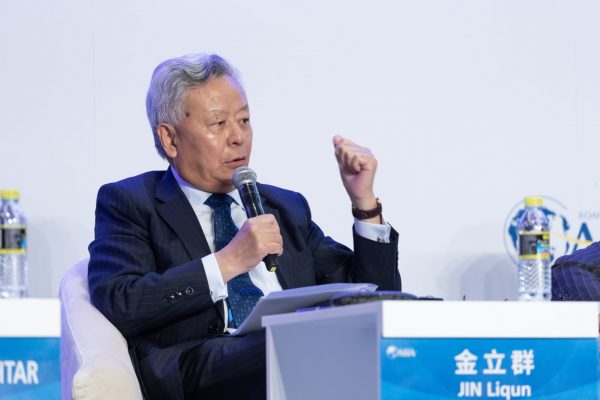As the AIIB’s membership continues to expand, many have questioned whether it will work to consolidate or contest existing multilateral financing norms, standards and practices. The AIIB’s relationship with its closest multilateral competitor and collaborator, the Asian Development Bank (ADB), is at the centre of such questions.
The ADB has 68 members and a total subscribed capital of US$150 billion. In 2018, growing demand for ADB assistance saw new commitments of US$21.58 billion in loans and grants and 37 per cent year-on-year growth for private sector commitments.
After four years of operations, the AIIB has the same subscribed capital as the ADB but a smaller investment portfolio totalling US$3.5–4.5 billion across 15 to 20 projects for 2019. This is equivalent to a sixth of the ADB’s 2018 portfolio.
Asia requires an estimated US$26 trillion of infrastructure investment before 2030. There is ample opportunity for the AIIB to grow its emergent project portfolio without competing against the ADB.
The ADB and AIIB have a shared vision for development and infrastructure financing. They have been quick to form cooperative relationships. As of 2019, the AIIB has signed memoranda of understanding with the ADB, the World Bank and 12 other development banks and funds. The AIIB has been eager to emphasise its position as ‘a member of the international family of development banks’. Many of the AIIB’s senior staffers are former ADB and World Bank employees.
While ADB–AIIB collaboration is growing, it runs parallel to persistent geopolitical tensions that exist between the shareholders of these institutions. The United States and Japan’s decision not to join the AIIB and the US criticism of its political-economic allies for becoming AIIB members demonstrates this.
The United States and Japan are the ADB’s two leading shareholders, each contributing 15.6 per cent of total subscribed capital and maintaining 12.8 per cent voting power. The institution has always served as a vehicle for advancing the geostrategic interests of these two countries — particularly Japan. Every ADB president has been Japanese, Japanese staffers dominate many senior institutional positions and ADB-funded projects can be mapped against Japan’s geopolitical priorities.
Where the ADB is predominantly Japanese-led, the AIIB is a Chinese-led institution. China is the AIIB’s largest shareholder and holds 26.6 per cent voting power — larger than the next five largest vote-holders combined. This provides China with an effective veto power over all majority decisions. It has already used such powers to reject Taiwan’s application for membership.
China is now a major infrastructure financier in the Global South and the AIIB is one of many institutions through which China will continue to expand its infrastructure financing (including for example, the China Development Bank and Shanghai Cooperation Organisation). These institutions are part of a historic shift in the global political-economic landscape that has seen China increasingly shaping Asia’s future development trajectories.
The AIIB also provides numerous other benefits to the Chinese Communist Party — including a means to channel capital reserves into new investment projects that support Chinese construction firms while making diplomatic gains. The successful management of an MDB enhances China’s status and influence in borrowing countries while shaping regionalisation in ways that advance China’s geostrategic and geoeconomic interests.
MDBs are inextricably linked to the bilateral relationships of their lenders, but this doesn’t mean they are unable to maintain some distance from such relationships. MDBs can provide a mechanism for funding projects that would be politically problematic for bilateral aid. The lending patterns of both the ADB and AIIB — which have funded projects in countries which are not allies of Japan, the United States or China — reflect this. As of April 2019, India has been allocated 28 per cent of all AIIB loans despite being China’s foremost competing rising regional power.
Still, given that infrastructure financing and construction is one means through which geoeconomic and geopolitical power is projected, some level of competition between the ADB and AIIB seems inevitable.
China may have the most significant role to play in cultivating future cooperation between the ADB and AIIB. China is a leading shareholder in both institutions and the ADB’s third-largest recipient of lending. China also undertook considerable revisions to its initial proposal for the AIIB in order to appease concerned states and build a broad institutional membership. In other words, it has shown a willingness to compromise in terms of MDB leadership that exceeds that of the United States.
Kearrin Sims is a Research Fellow of The Cairns Institute and a Lecturer of development studies at James Cook University, Cairns, Australia.

